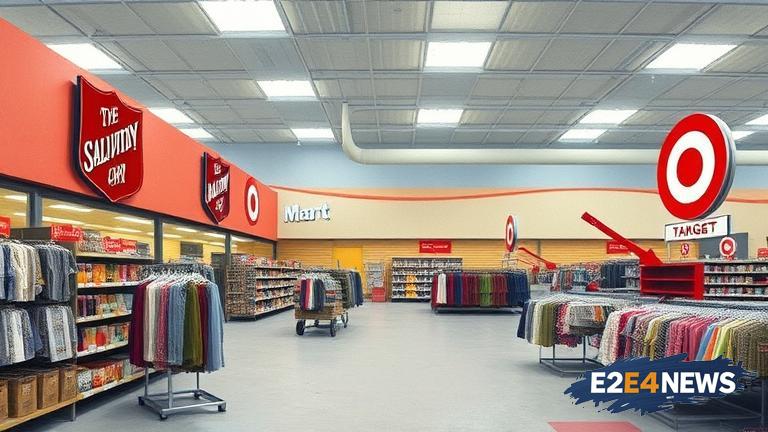In a surprising turn of events, an investigation has found that Salvation Army op-shops, known for their affordable and donated goods, have surpassed Kmart and Target in terms of pricing. This revelation has left many customers stunned, as they had always assumed that thrift stores were the go-to destination for budget-friendly shopping. However, it appears that the prices of second-hand items at Salvation Army stores have increased significantly, making them less competitive with their retail counterparts. The discovery was made after a thorough comparison of prices between Salvation Army op-shops, Kmart, and Target, which revealed that the thrift store chain was charging more for similar items. For instance, a used t-shirt that would typically cost a few dollars at a thrift store was found to be priced at over $10 at a Salvation Army op-shop, while the same item could be purchased for less than $5 at Kmart or Target. This trend was observed across various product categories, including clothing, household items, and furniture. The high prices at Salvation Army op-shops have raised concerns among customers, who are now questioning the value of shopping at thrift stores. Many have taken to social media to express their disappointment and frustration, with some even calling for a boycott of the charity organization. The Salvation Army has responded to the criticism, stating that the prices of their items are determined by the quality and condition of the donated goods, as well as the costs associated with running their stores. However, this explanation has done little to alleviate the concerns of customers, who feel that the prices are still too high. The issue has sparked a wider debate about the affordability of second-hand shopping and the role of charity organizations in the retail market. Some argue that thrift stores like Salvation Army should prioritize affordability and accessibility, while others believe that the prices are justified given the quality of the items and the charitable work of the organization. As the debate continues, customers are being forced to reevaluate their shopping habits and consider alternative options for affordable and sustainable fashion. The price comparison has also highlighted the importance of transparency and accountability in the retail industry, with many calling for greater scrutiny of pricing practices and charitable donations. In response to the backlash, some Salvation Army op-shops have announced plans to review their pricing strategies and implement changes to make their items more competitive. However, it remains to be seen whether these efforts will be enough to restore customer trust and confidence in the brand. The controversy has also raised questions about the impact of fast fashion on the environment and the role of second-hand shopping in reducing waste and promoting sustainability. As consumers become increasingly conscious of their environmental footprint, the demand for affordable and sustainable fashion options is likely to grow. In this context, the pricing controversy surrounding Salvation Army op-shops serves as a reminder of the need for greater transparency and accountability in the retail industry. Ultimately, the future of second-hand shopping and the role of charity organizations in the market will depend on their ability to adapt to changing consumer expectations and prioritize affordability, sustainability, and transparency. The Salvation Army has a long history of providing essential services to communities in need, and it is hoped that the organization will take steps to address the concerns of customers and restore its reputation as a trusted and affordable destination for second-hand shopping. As the situation continues to unfold, one thing is clear: the pricing controversy surrounding Salvation Army op-shops has sparked a vital conversation about the future of retail and the importance of prioritizing affordability, sustainability, and transparency.
